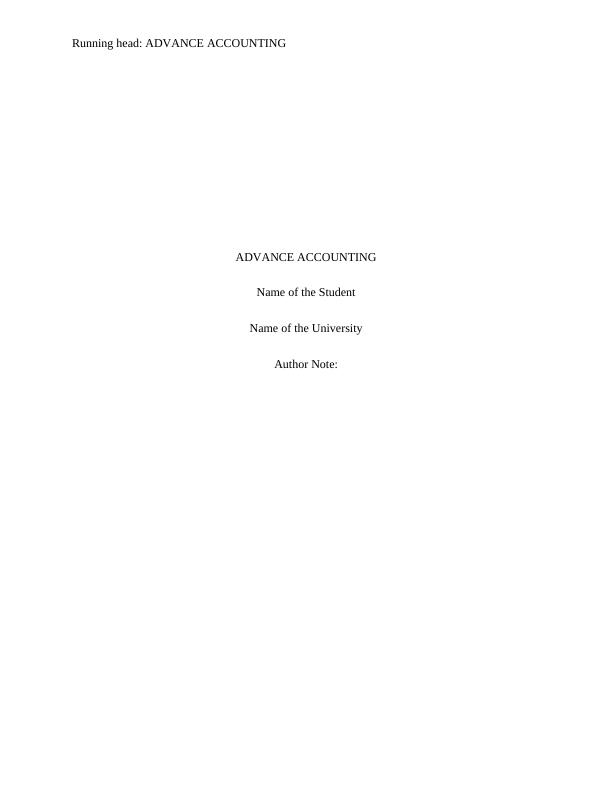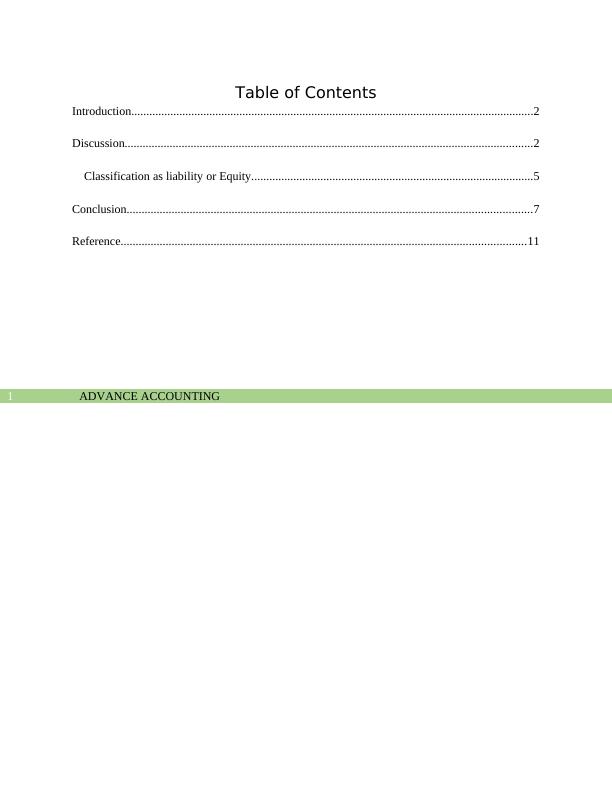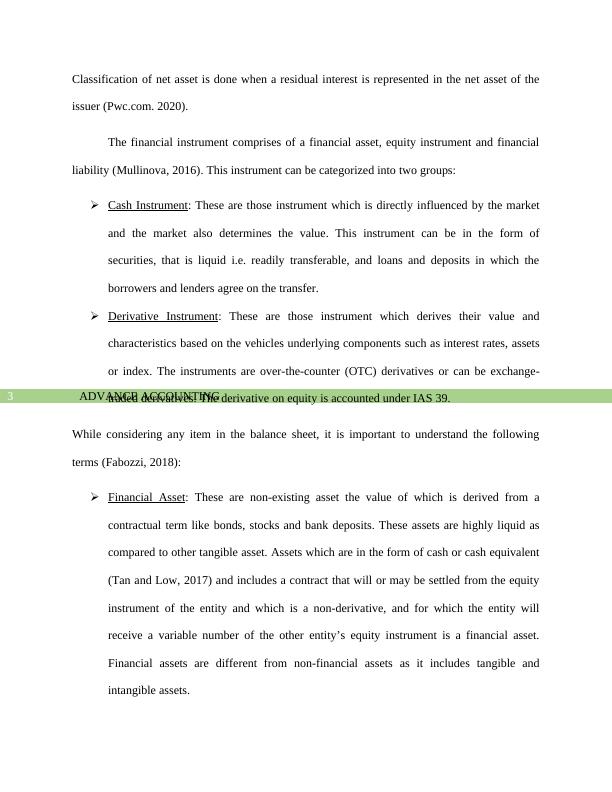Advance Accounting | GAAP and IFRS
An individual assignment on advanced accounting principles and practice, consisting of two tasks related to the distinction between debt and equity in financial statements.
13 Pages2208 Words27 Views
Added on 2022-08-24
Advance Accounting | GAAP and IFRS
An individual assignment on advanced accounting principles and practice, consisting of two tasks related to the distinction between debt and equity in financial statements.
Added on 2022-08-24
ShareRelated Documents
End of preview
Want to access all the pages? Upload your documents or become a member.
Importance of Classification of Financial Instruments
|7
|823
|32
THE MASTERS OF FINANCE
|6
|1533
|24
Accounting Assignment | Pro forma Schedule for Journal Entries
|5
|1160
|37
Impact of IFRS 9 on Financial Assets and Liabilities of QBE Insurance
|13
|3114
|341
ACCT6007 - Financial Accounting Theory and Practice
|10
|1683
|117
Advanced Accounting | Task Report
|9
|1620
|18




